Our Verdict
The Razer Blade 14 is an evolution of the now-classic compact chassis. It's stylish, robust, and feels great in the hands. But the inevitable price premium is tough to deal with when you can get similarly excellent gaming laptops, but with far superior specs, for significantly less. You just can't get the 14-inch form factor.
For
- 14-inch is where it's at
- Stylish, robust chassis
- Bright, pin-sharp 1600p screen
- Upgradeable RAM
- 780M iGPU
Against
- Hugely expensive for an RTX 4070 machine
- Poor comparative performance for the money
PC Gamer's got your back
The new Razer Blade 14 is absolutely the gaming laptop I would want myself, it's just not one I can reasonably recommend to any PC gamer just looking for the fastest gaming slab they can afford. You've got to specifically want the Blade 14 to spend the sort of money Razer is asking, or at least want the best compact gaming laptop around today.
Because it is a lovely laptop; the very epitome of Razer's superbly refined, and surprisingly restrained notebook design ethos. Every inch: a laptop rocking the gaming MacBook aesthetic. I can't help but really dig it. I love the 14-inch form factor, too. As much as I appreciate the move into 16-inch designs with beefier screens, this smaller scale makes the Blade 14 a laptop that can be equally at home as your home gaming machine and as your daily driver office notebook.
So, no unequivocal recommendation? Well, it's a well-trod argument against Razer laptops, but it's not the machine for you if you want anything like a sense of value from your purchase. It's just so damned expensive for the core components and the resulting performance you get out of it.
I mean, it's a gorgeous machine, and reliably well made, but it's significantly more expensive than other seriously powerful gaming laptops—and they're systems which come with much better specs, and far higher levels of performance. We recently reviewed the Acer Predator Helios 16, and it's sporting the absolute best gaming laptop screen we've ever used. That's a $2,300 machine. Then there's our current pick as the outright best gaming laptop, the Lenovo Legion Pro 7i. That's a $2,500 system, and one you could find for just $2,200 over the recent summer sales period.
This Razer Blade 14 system I've been lovingly cradling is a $2,700 machine that sports the CPU/GPU combo of an AMD Ryzen 9 7940HS and Nvidia RTX 4070. You also get the now basic standard of 16GB DDR5 memory and a 1TB SSD, which is the sort of minimum spec you'd require in a $1,500 notebook, not an almost $3,000 one. Though you can at least upgrade the RAM in this 2023 edition, which you couldn't with the previous Blade 14 machines.
And those other two systems I was talking about? They're both 16-inch gaming laptops with an Intel Core i9 13900HX CPU and a Nvidia RTX 4080 graphics chip. Those are far superior slices of silicon—the Intel processor is a 24-core, 32-thread monster, while the Ryzen chip is a standard eight-core, 16-thread CPU. A 140W RTX 4070 can't hold a candle to the gaming performance of a 175W RTX 4080, which is what both the Lenovo and Acer are packing.

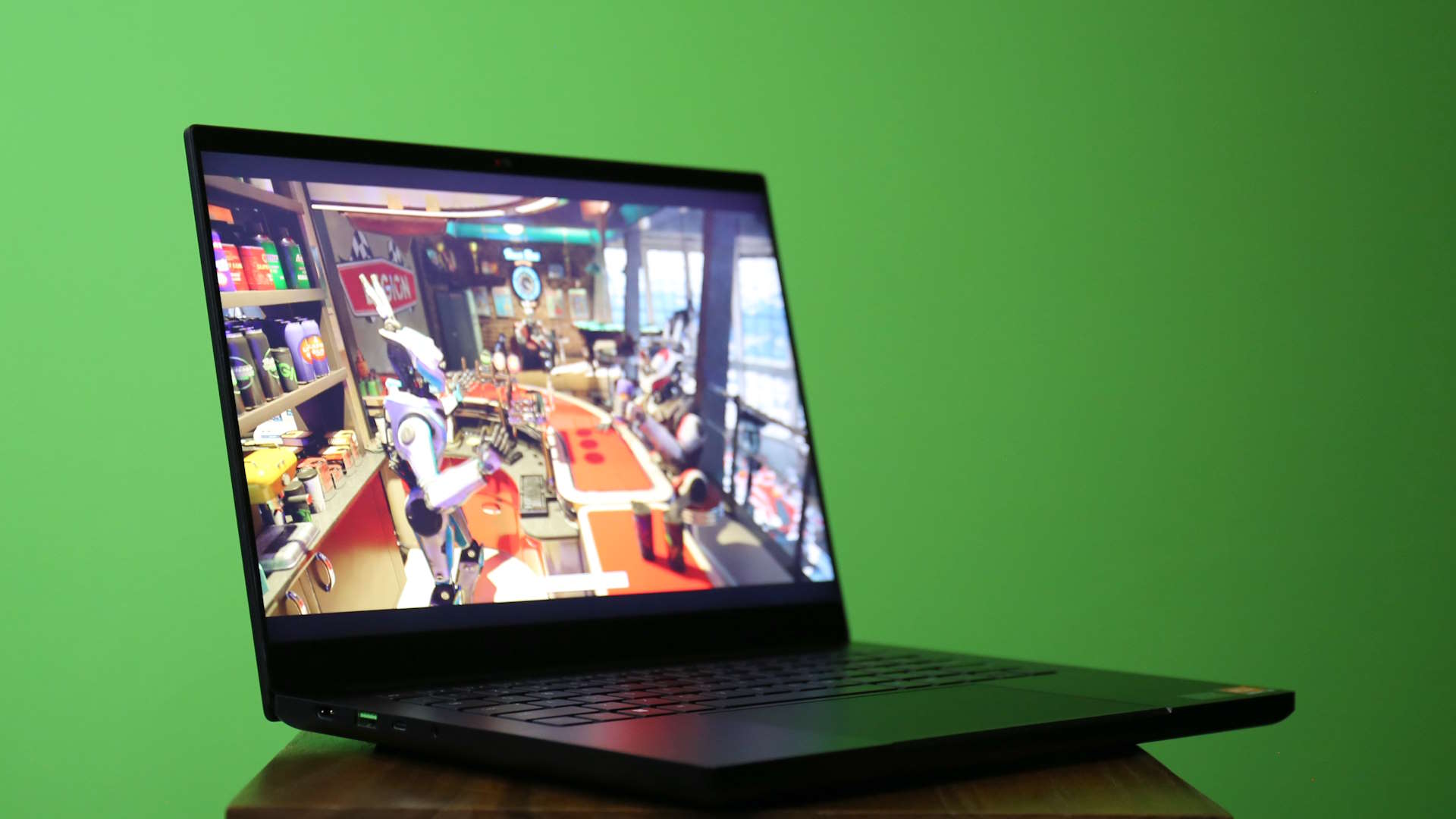

It's a frickin' blood bath in the benchmarking stakes.
It's a frickin' blood bath in the relative benchmarking stakes, then, with the Blade 14 taking an absolute hiding. Even our favourite budget gaming laptop, the Gigabyte G5, with its RTX 4060 GPU, pops up to stick a shoe in the Razer's ribs at some points, too.
Though honestly I'm not convinced by those Cyberpunk 2077 numbers; they could do with a recheck. But even so, the RTX 4060 is not so far behind the RTX 4070 that if you were just looking at the raw gaming performance alone you'd be convinced that spending near three times the price is worth it.
1080p gaming performance
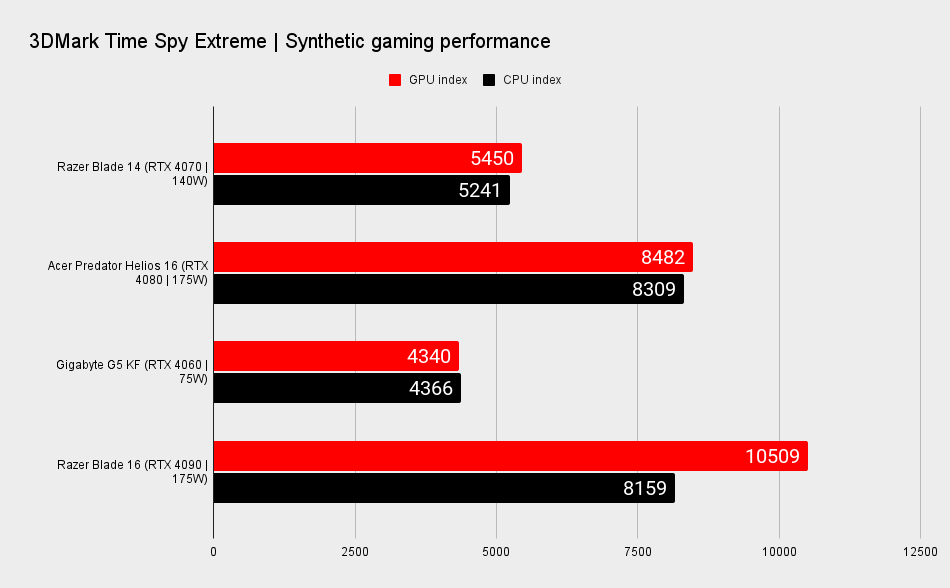
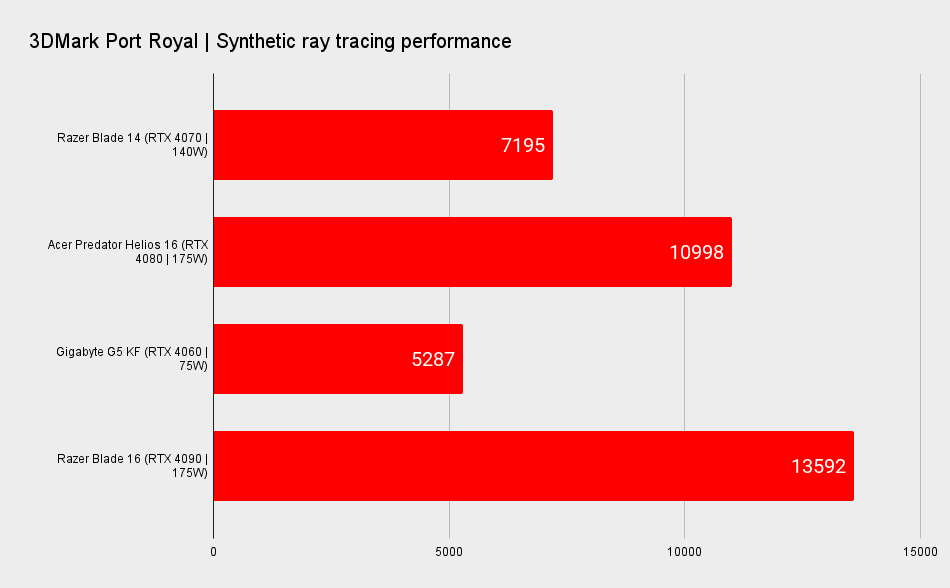
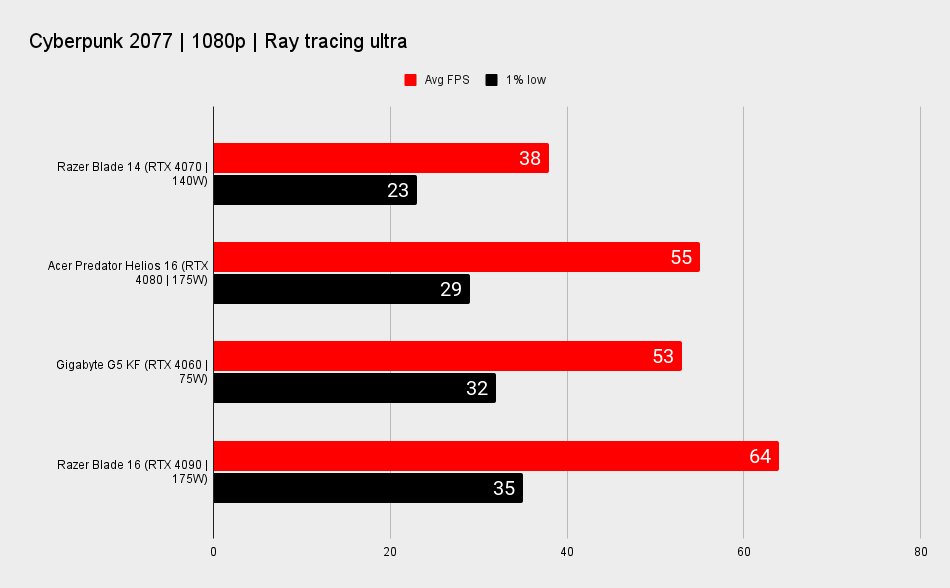
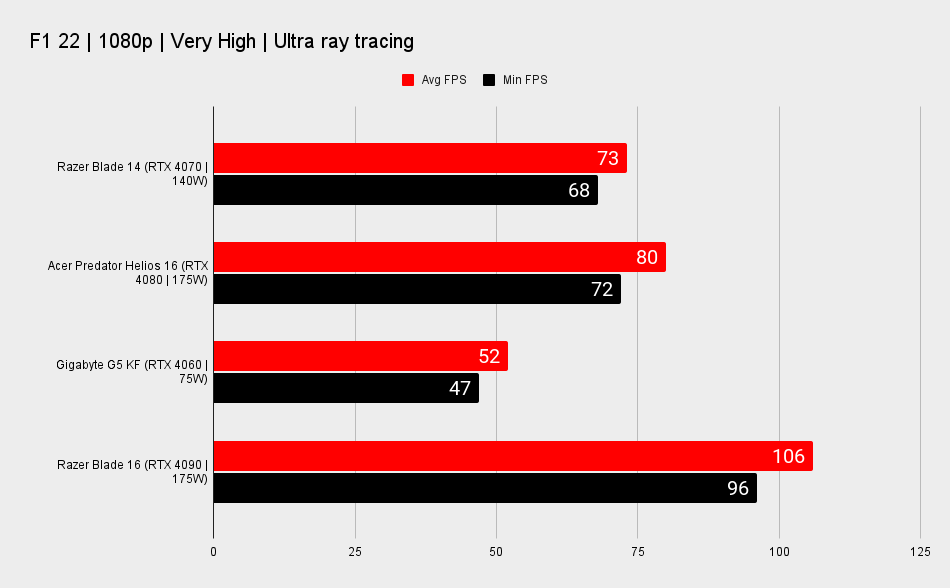
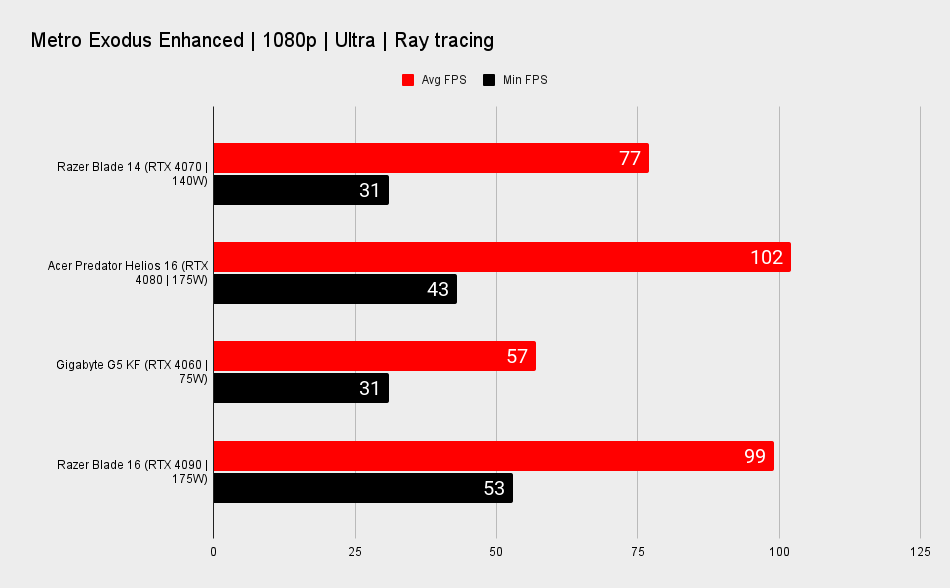
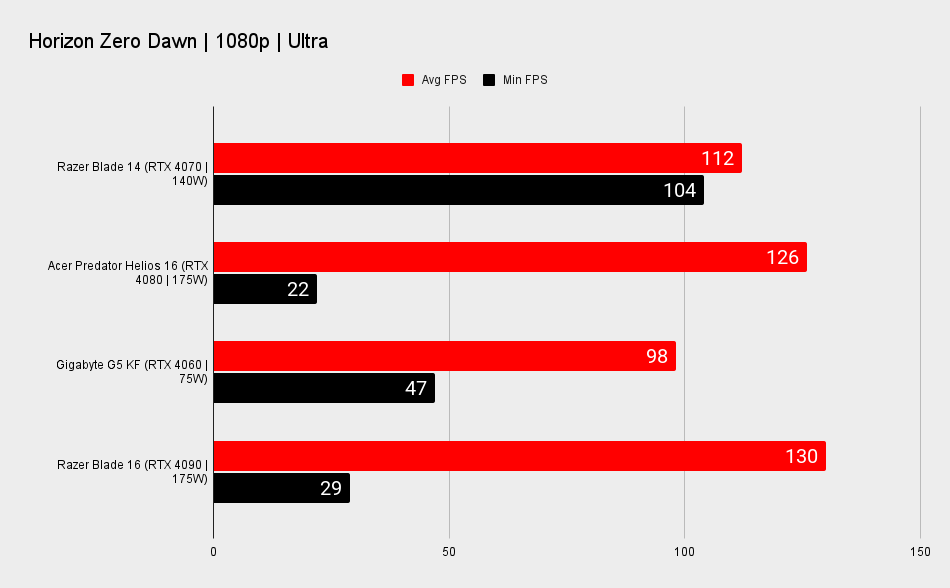
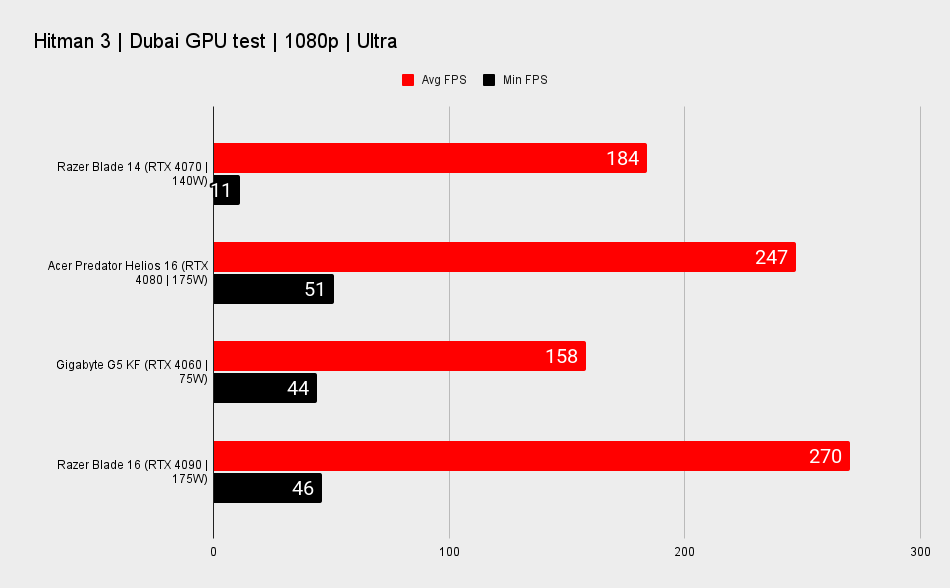
System performance



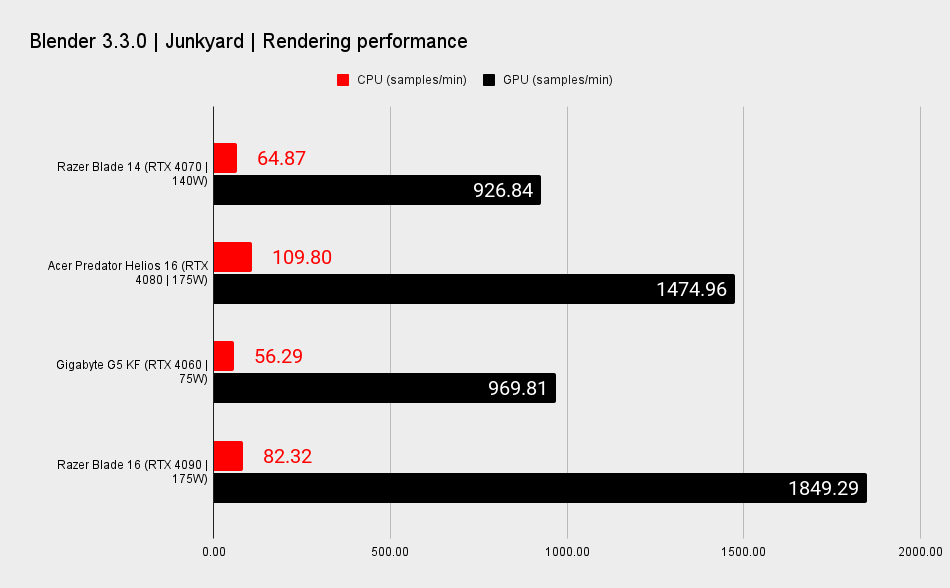
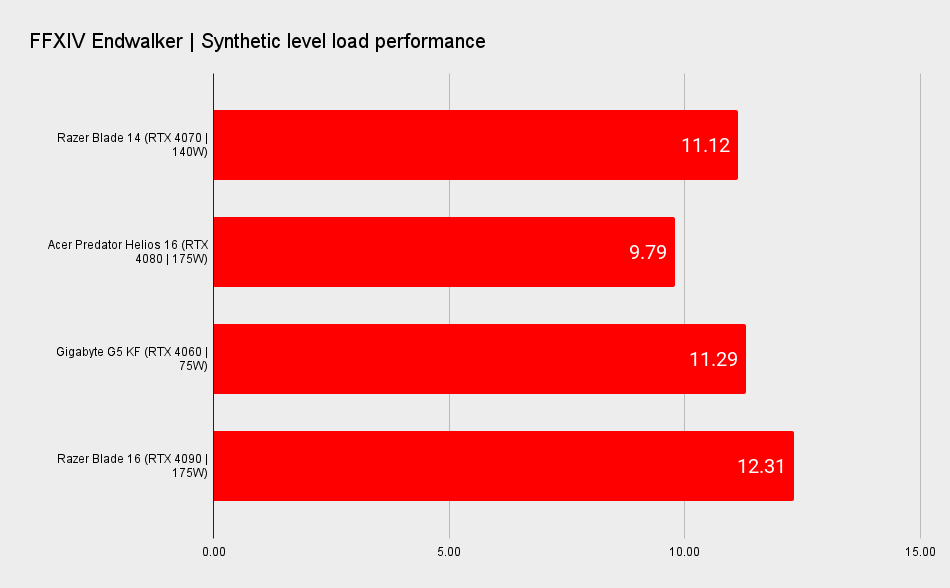
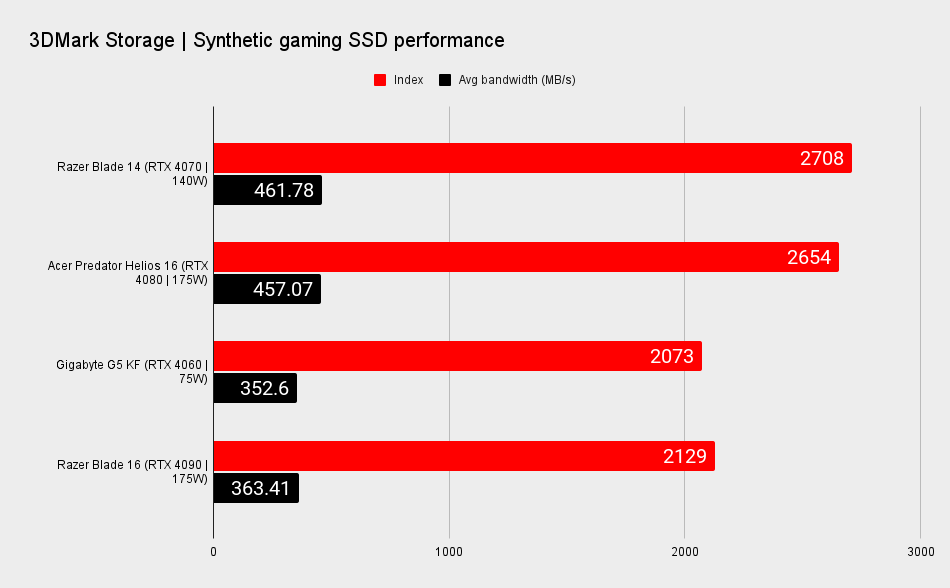
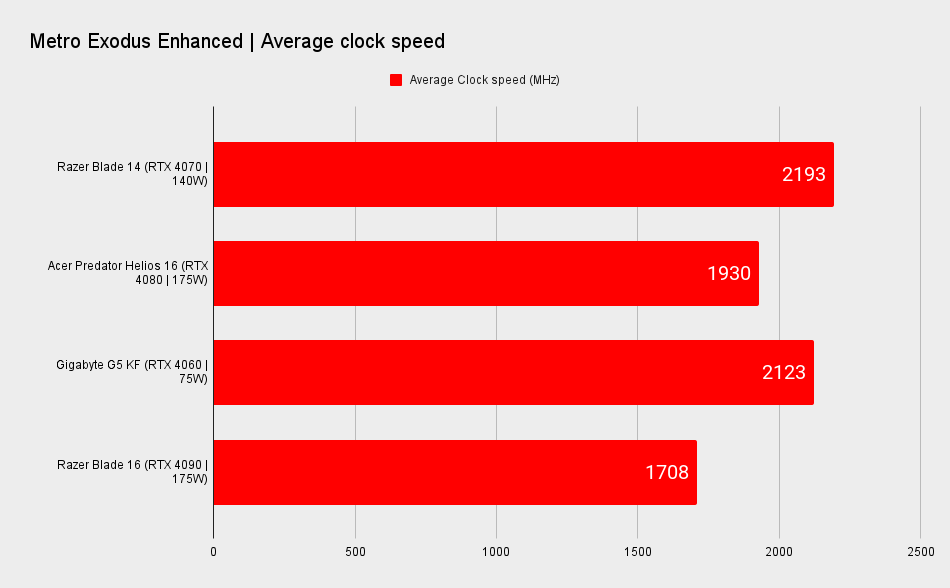
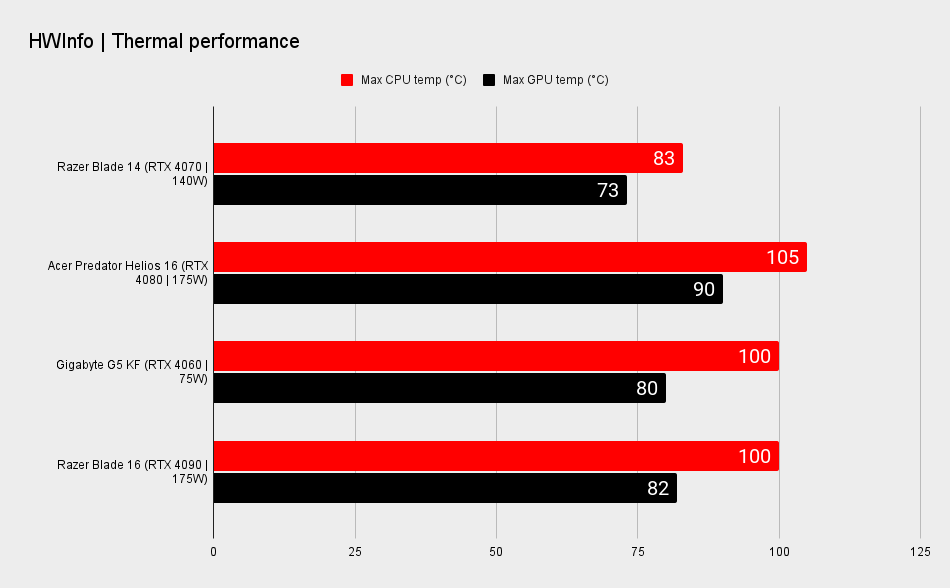
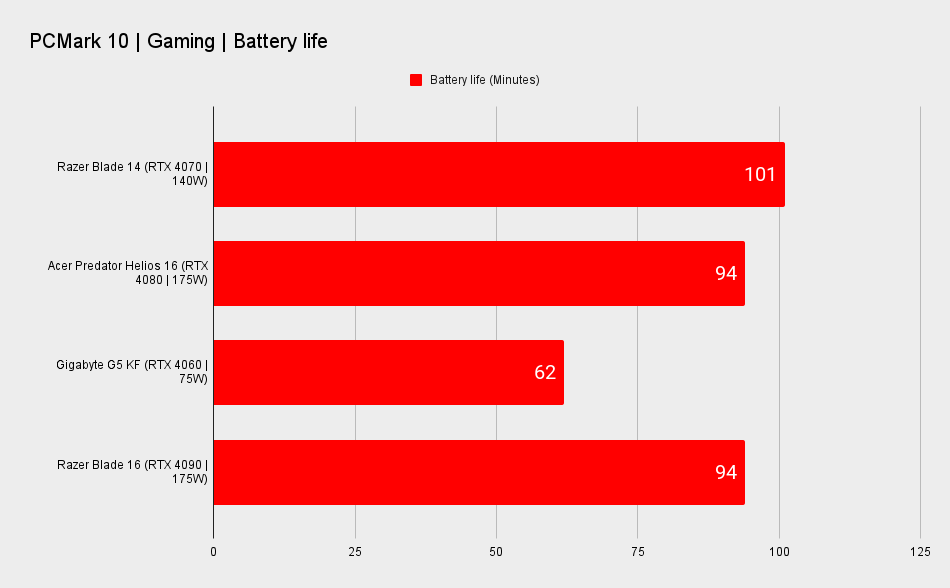
But, at the risk of sounding like Razer's marketing department, the Blade 14 isn't about raw gaming performance. Dammit, I'm not going to say it's about the holistic experience, but we are talking about a genuinely premium high-end system as a whole, and not just about its individual components.
Though, taking the relative benchmarking out of the picture for a second, those components are still able to deliver a great gaming experience, even at the native 2560 x 1600 resolution of the pin-sharp 14-inch panel Razer's stuck in this thing. It's a slick 240Hz display, too, and it looks great at this scale.
I also appreciate the fact the Ryzen 9 7940HS ships with the Radeon 780M iGPU inside it. That's the same 12CU RDNA 3 graphics silicon you get in both the ROG Ally and AOKZOE A1 Pro gaming handhelds, and it actually delivers impressive 1080p gaming frame rates. The discrete Nvidia GPU inside the Blade 14 is also going to gobble down juice like a thirsty tramp, and that makes for a bad time away from a plug socket, but switching over to the iGPU instead will give you a little longer gaming uptime on battery.
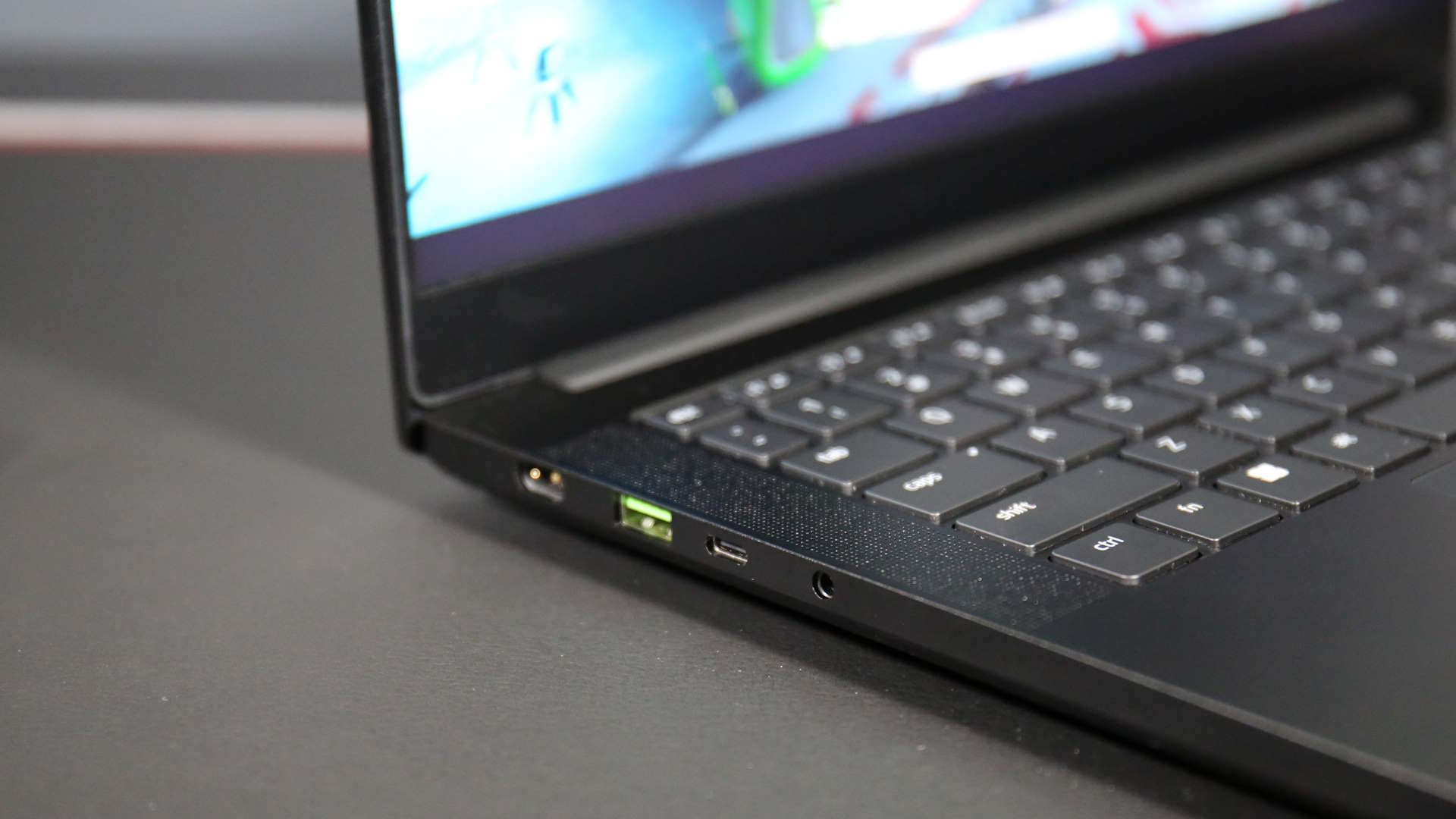


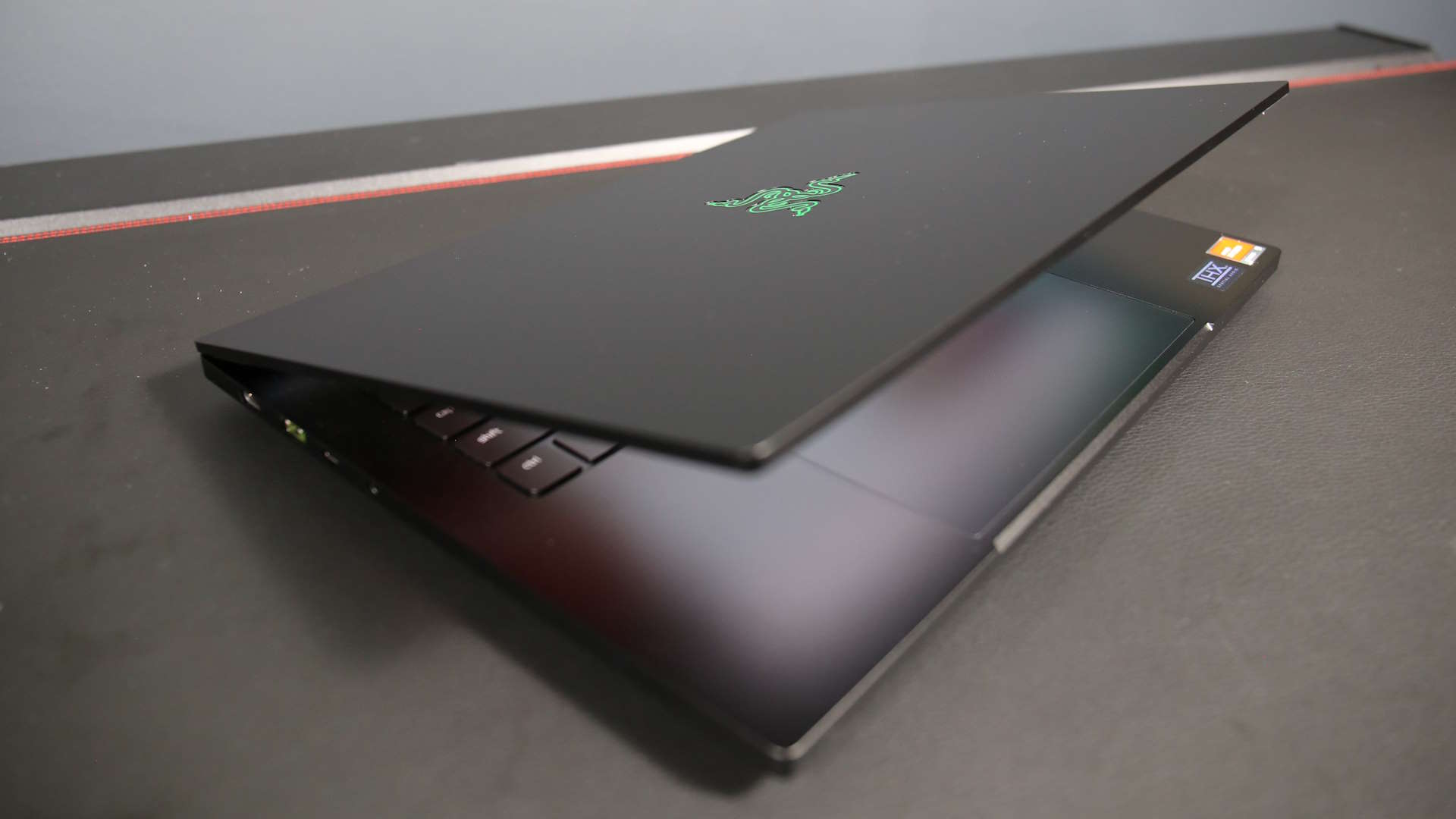
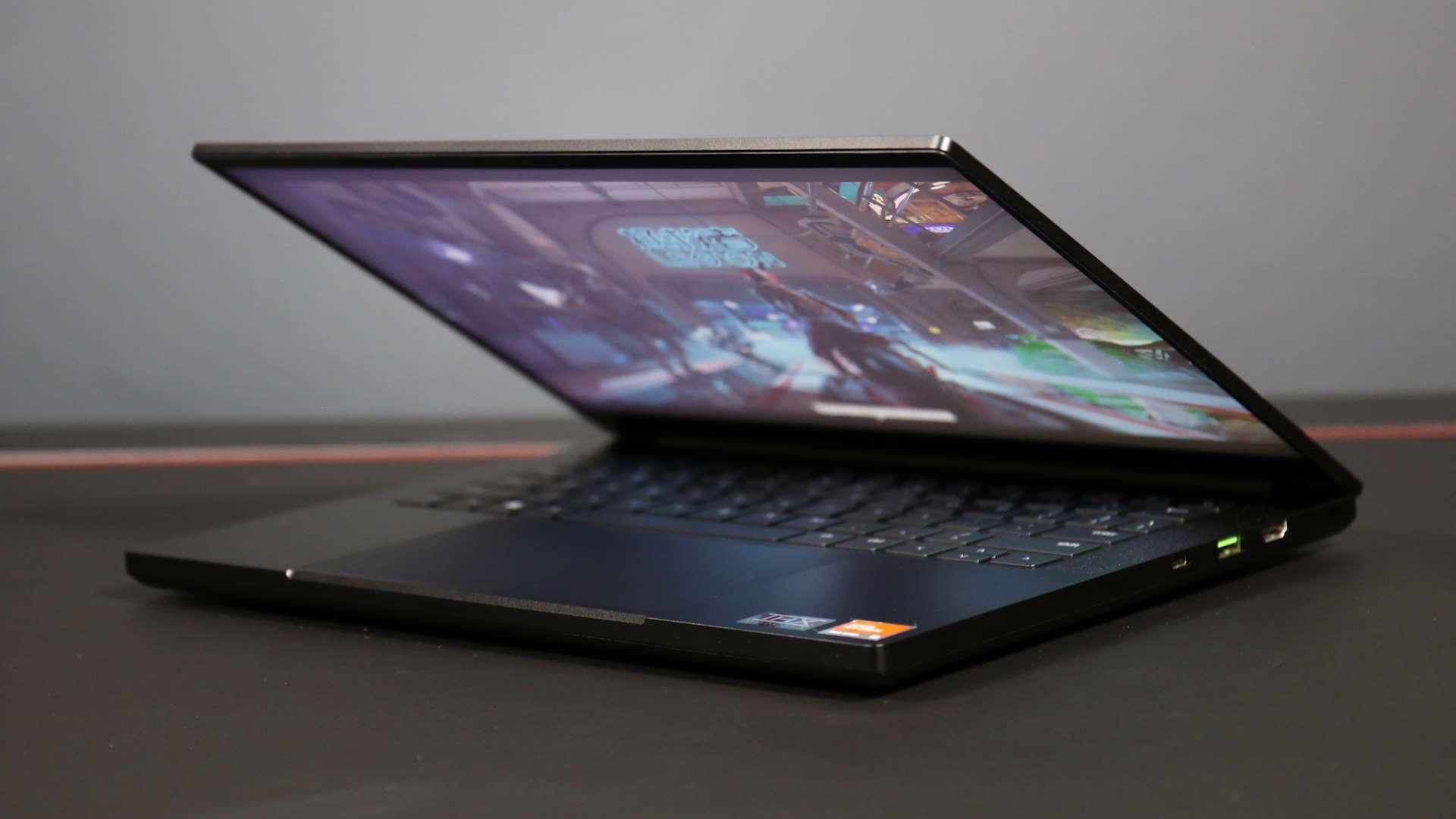
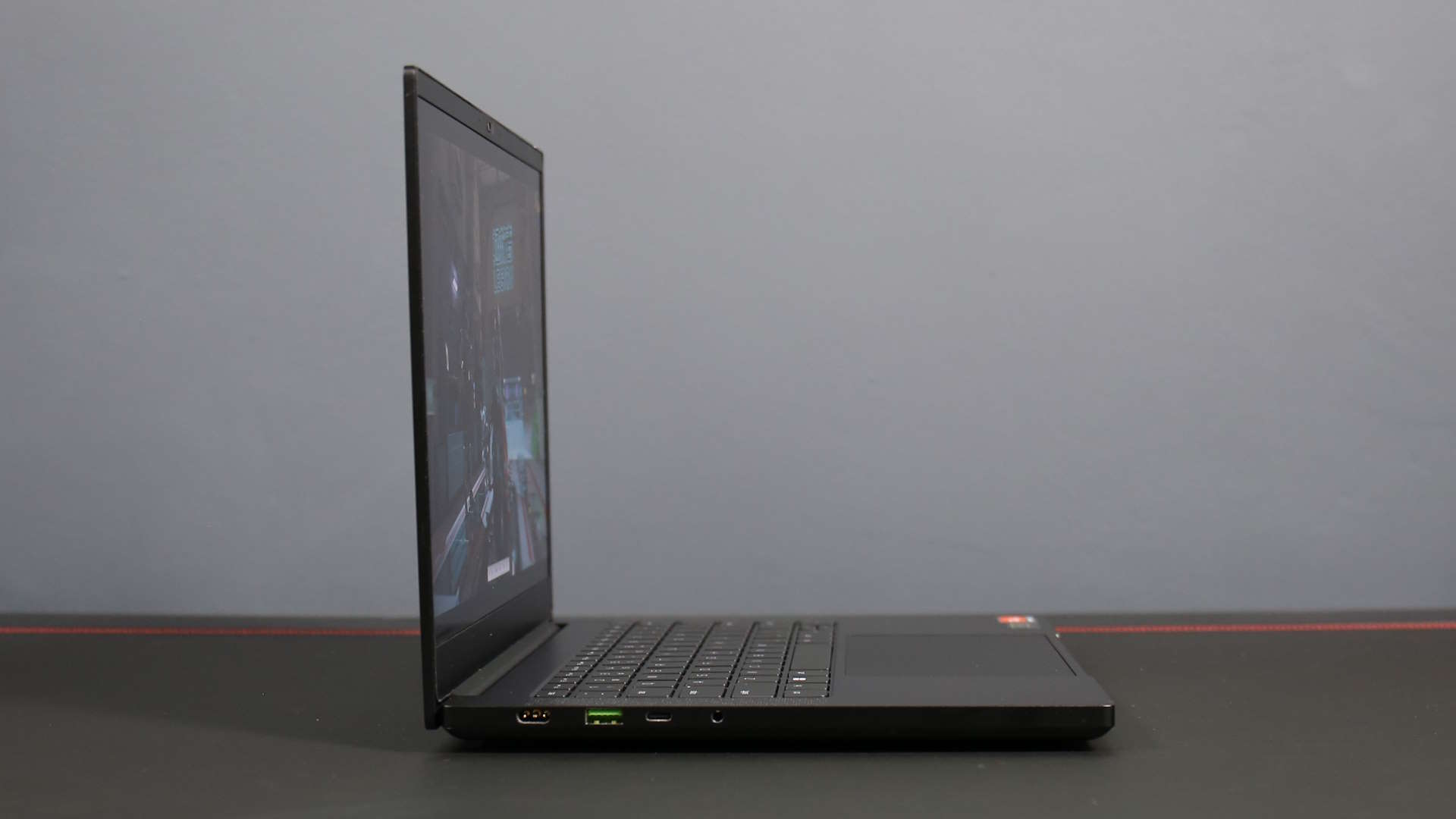

It is also a slightly different machine to the previous two Blade 14 laptops Razer released in 2021 and 2022 respectively. Like me, it's gathered a little extra timber as it's gotten older. The chassis is a bit thicker, a bit longer, and a bit wider. We're only talking millimetres here, so the Blade 14 still feels like a compact notebook. And I'm okay with that if it gives us a little extra cooling (and therefore quiet) and means I get that 16:10 display.
I mean, it's not a mini-LED like you'll find in the Acer Helios 16, or the Asus Zephyrus M16, but it's as good as the panel in the Lenovo for sure. And I'm very much into the extra height a 2560 x 1600 laptop display gives you.
So, does that extra girth make it quieter? Well, without having the units side-by-side, it's hard to tell—certainly on the top performance mode, running a visually demanding game at full resolution does make it a little shouty. It's nowhere near the levels of the worst offenders, such as the MSI Titan, or even the Blade 16 we tested, but it's definitely audible without a good gaming headset.
✅ You want a compact gaming machine: the diminutive scale of the 14-inch chassis, even at this slightly larger scale makes for a laptop that's great for gaming and for general use out and about.
✅ You've always wanted a gaming MacBook: the restrained design, and brushed aluminium chassis of the Blades gives them that almost Apple aesthetic.
❌ You're after top performance: limited to the RTX 4070, and by the compact chassis, you're not going to get the absolute highest frame rates out of the Nvidia silicon. Though gaming performance is still good, even at the 1600p native res of the screen.
❌ You want the best bang for your buck: the Blade 14—or any Razer laptop for that matter—is not about value. You can get far more powerful components, in terms of both CPU and GPU, in gaming laptops that cost significantly less than the latest Blade. And if pure gaming frame rates are your thing, you're better off with something like the Lenovo Legion 7i Pro.
There is the option to drop into Silent mode via the Synapse software, and I was surprised at just how quiet (inevitably not silent) it ran, but more so how closely it performed to the full, unfettered mode. If you want to pass the Ridley Train Gaming Embarrassment Test with this thing, hit Silent mode and your shame will be avoided.
But damn, this thing is $2,700, and that's really hard to swallow.
If money's no object and I'm just after the best compact gaming laptop then I wouldn't hesitate to drop the cash on this machine. The build quality is outstanding and that solid aluminium chassis feels incredibly robust. The chiclet keyboard is good, with decent spacing between keys for a compact machine, making typing out this review an easy experience. The trackpad is deliciously large, but I'm not entirely sure it's the most sensitive pad I've ever used. It's fine, but I'd probably not say anything more than that.
That increased chassis size means Razer has been able to jam in a slightly larger battery compared to the two previous models. You get a full 68Wh battery as opposed to the 61Wh battery the Blade 14 shipped with before, and you do get a decent level of uptime, which is handy when you're potentially going to be using it as an all-purpose notebook away from the plug.
Honestly I'd probably go for this exact spec, too. The RTX 4060 version is $300 cheaper than this RTX 4070 edition, but still, $2,400 for a low-end spec you can find for over $1,000 less, well that feels even harder to choke down.
To be honest, I've been brutally spoiled by the latest Blade 14. As much as I've enjoyed the new 16-inch machines, now that Razer's jammed a 1600p screen into this still compact frame I don't want to go back to larger notebooks. If I could scrape the cash together, this is the gaming laptop I'd have my heart set on, but it's certainly not the one for you if you just want the most powerful machine your money can buy.
The Razer Blade 14 is an evolution of the now-classic compact chassis. It's stylish, robust, and feels great in the hands. But the inevitable price premium is tough to deal with when you can get similarly excellent gaming laptops, but with far superior specs, for significantly less. You just can't get the 14-inch form factor.

Dave has been gaming since the days of Zaxxon and Lady Bug on the Colecovision, and code books for the Commodore Vic 20 (Death Race 2000!). He built his first gaming PC at the tender age of 16, and finally finished bug-fixing the Cyrix-based system around a year later. When he dropped it out of the window. He first started writing for Official PlayStation Magazine and Xbox World many decades ago, then moved onto PC Format full-time, then PC Gamer, TechRadar, and T3 among others. Now he's back, writing about the nightmarish graphics card market, CPUs with more cores than sense, gaming laptops hotter than the sun, and SSDs more capacious than a Cybertruck.

